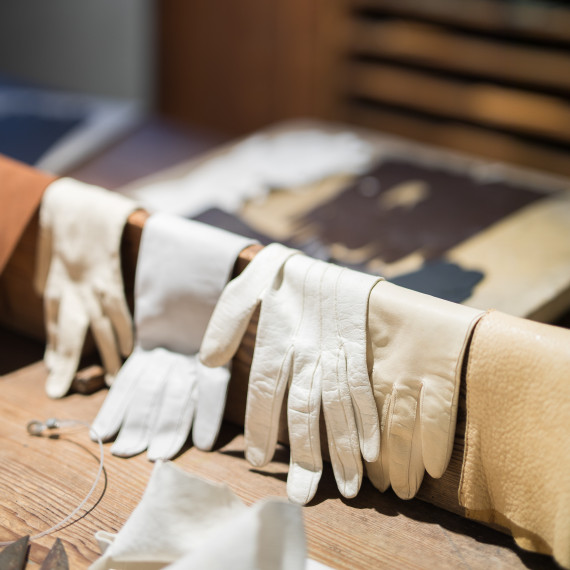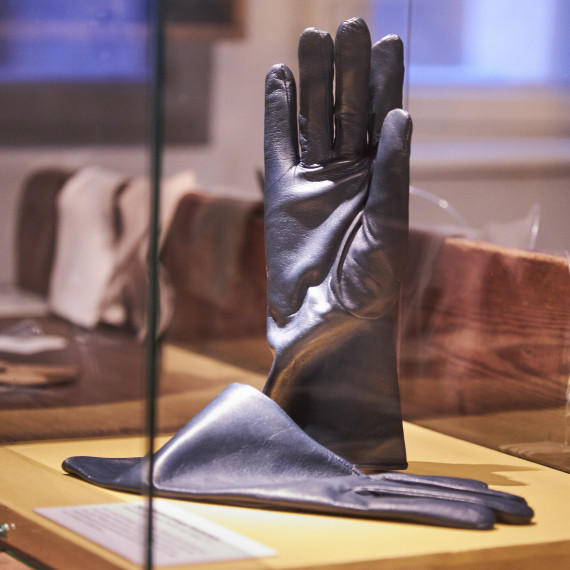The glover's workshop
 The glover's workshop
The glover's workshop
White leather tawing in Erlangen
Because of the noxious odours they emit and their high water consumption, the first white leather tawing works were built outside the town walls in a separate district near the Regnitz river. The 'tannery' built from 1790 onwards was supposed to have its own water supply by way of a channel leading from the Rödelheim ditch to the Schwabach creek. However, it soon collapsed and was ultimately filled in. Only much later were further white leather tawing workshops established in other locations, e.g. near today's Fuchsenwiese (fox's meadow) and the Geißmarkt ('goat market'), today's Theaterplatz.
'Glacé leather tanning', which used lamb and kid skins only, remained exclusively in French hands until the time of Bavarian rule, and was carried out with such skill that the method employed soon became known as 'Erlangen tawing'.
In contrast to Rotgerbung (vegetable-based tanning) and Sämischgerbung (oil-based tanning) processes, tawing is based mainly on the use of mineral tanning agents. The Blößen (animal hides) that had been prepared in the 'water workshop' were then treated in a 'walking vat' with a Glacégare ('glacé brine') or Glacénahrung ('glacé food') consisting of a mixture of alum, cooking salt, wheat flour, egg yolk, and water. The recipes and individual processing steps were long guarded as trade secrets and remained essentially unchanged until the industry died out.
 The last hand-made gloves from Erlangen
The last hand-made gloves from Erlangen
Pfeiffer Leder und Mode, 2019
The glover's workshop
In contrast to hosiery, glovemaking was not based on the invention of a particular technology, but on artisanal craftsmanship. It was a skilled craft for which only a few simple tools were required.
18th century glovemaking workshops were located in domestic dwellings and outbuildings, and contained work stations for a master glover and one or several journeymen. Workshops were equipped mainly with one large work table, the Handschuhmachertafel ('glover's table'), as well as cabinets and shelves for storing tools, leather, and the cut pattern pieces.
Technological innovations during the 19th century were essentially limited to two inventions: the 'iron hand' punch press, invented 1834 in Grenoble and becoming widespread in Erlangen from 1864, and the glove sewing machine, which appeared soon after.
The size of glovers' businesses also changed little, at least in Erlangen. While some enterprises began to call themselves 'factories' from 1858 onwards, none of these businesses, including the white leather tawing tanneries associated with them, had more than 30 employees. In contrast to other glovemaking towns such as Altenburg, Arnstadt, Berlin, and Munich, small business sizes continued to predominate in Erlangen.
Traditional production methods, a lack of capital, and other factors contributed to the ultimate decline of glovemaking in Erlangen after 1945.
< Previous chapter | Next chapter >
